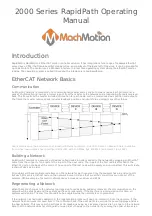
Lucent Technologies Lineage
®
2000 ECS Battery Plant H569-403
Issue 4 February 1997
Product Description 2 - 3
Typical Battery
Plant
Description
A basic block diagram of a typical dc battery plant is shown in
Figure 2-1. The battery plant accepts alternating current from the
commercial utility or a standby ac power source and rectifies it
to produce dc power for the using equipment. Control and alarm
functions are provided by the plant to interact with the rectifiers
and the office. In addition, the plant provides overcurrent
protection, charge, discharge, and distribution facilities. Battery
reserve automatically provides a source of dc power if the
commercial or standby ac fails. This battery reserve is
engineered to supply dc power for a specific period of time. In
normal practice, battery capacity is sized to provide three to
eight hours of reserve time.
Battery Plant
Subsystems
Figure 2-2 illustrates the arrangement and interconnections of
the typical ECS dc battery plant subsystems from the ac input to
the dc output. These subsystems are defined as follows:
AC Distribution: Connects the commercial and/or standby ac
power sources to the rectifiers within the plant and provides
overcurrent protection. This subsystem is usually supplied by
the customer.
Rectifiers: Convert an ac source voltage into the dc voltage
level required to charge and float the batteries and to power the
using equipment.
Audible noise
68 dBa (See Note 3)
Electrostatic discharge
IEC 801-2 Level 5 (15 KV) at 40%
relative humidity
Electromagnetic immunity
10V/m over the range of 20 to 2000MHz
Note 1: Earthquake testing has not been conducted on this bay. However, the bay's
components and architecture are very similar to J85500G-2, which has passed
Zone 4.
Note 2: Specified at 27.25 Vdc, 600 amperes output, and nominal input voltages and
frequencies.
Note 3: Measured at 2 feet (0.6 meter) from the rectifiers installed in plant (six rectifiers
in initial bay).
Table 2-A: Lineage
®
2000 Battery Plant Specifications
(Model H569-403)














































